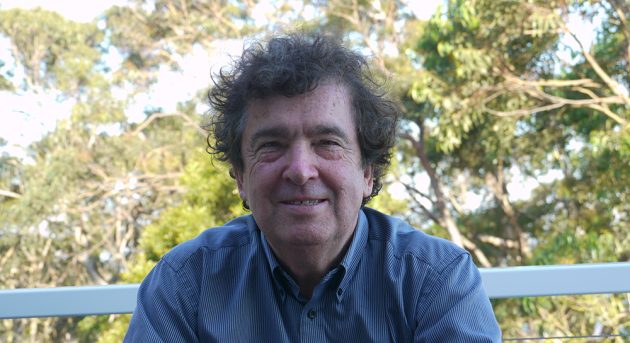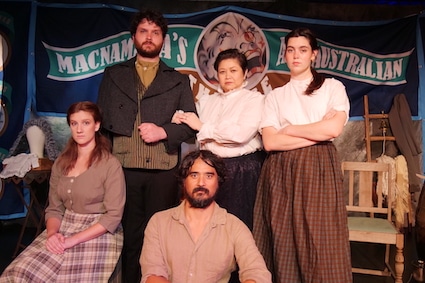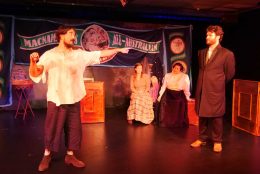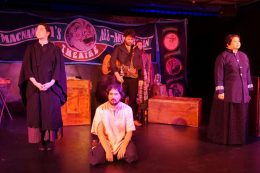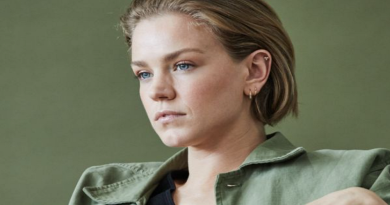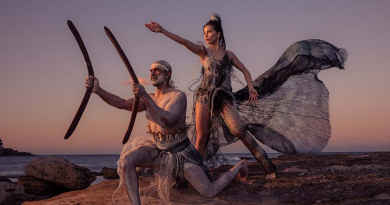Geoffrey Sykes: Bridging Past and Present Through ‘Australia Felix’
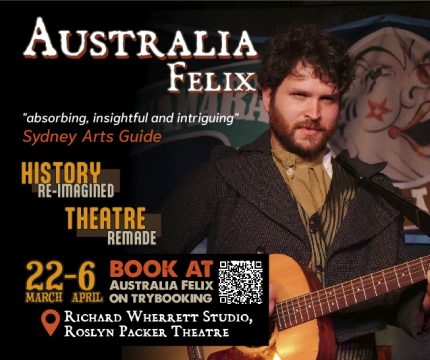
‘Australia Felix’ daringly inverts genres and upends historical narratives, presenting early Australia in a light that sparks dialogue on contemporary debates. Crafted by the esteemed Geoffrey Sykes, known for his works such as ‘Out of Africa’, ‘Somewhere South’, and ‘Tales of Kabbarli’, the play boasts a vibrant cast that navigates through a fast-paced, quintessentially Australian story with finesse. After its acclaimed showcase in December 2023 at the Chippen Street Theatre, the production has been lauded for its engaging storytelling and dynamic performances.
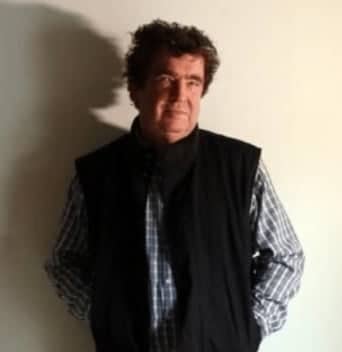
‘Australia Felix’ finds its roots in Sykes’ earliest forays into playwriting, inspired by the historical figure of George Clarke, a convict whose trial in Bathurst marked a pivotal moment in colonial history. Sykes recalls, ‘The first shorter version of this play was the first performance script I ever wrote… It confidently and radically probed questions of land, justice, Aboriginality, religion, and identity.’ This early work laid the foundation for what would become a seminal piece in Sykes’ oeuvre, encapsulating themes that would permeate his later works.
After revising and extending the script three years ago, Sykes reflects on the continuity of his craft, noting, ‘It is satisfying as much as perplexing to consider one’s first writing can seem on a par with the most recent.’ This revision not only enriched the narrative but also posed a challenge: how to make a play written decades ago resonate with contemporary audiences. Through ‘Australia Felix,’ Sykes bridges the temporal gap, presenting a story that is as relevant today as it was at the time of its conception.
With a prolific career spanning over 30 years and an output that includes more than 30 professional theatre scripts, productions, and numerous video works, what inspired the creation of ‘Australia Felix,’ and how does this production differ from your previous works in terms of thematic exploration and production process?
Actually the first shorter version of this play was the first performance script I ever wrote. I was very young at the time, and living at Bathurst, where the first trial of George Clarke, hero of this revue show, occurred. The show was a conscious journey into a deeper history of this country – it confidently and radically probed questions that linger, of land, justice, aboriginality, religion and identity.
Three years ago the script was revised and doubled in length – I felt the first version was too short as a performance piece and its themes deserved more attention. However virtually every word of verse, lyrics and dialogue of the original version remained. It is satisfying as much as perplexing to consider one’s first writing can seem on a par with the most recent.
So rather than comparing Australia Felix to previous works, the script can be regarded as seminal to all that followed. Another question arises: we do an archival script now? How could this play resonate with the sensibility of a contemporary audience, and why is the present such a good context for its premier?
I wrote another script a little after Australia Felix. It was about a married couple, based on my unsuccessful dalliance with my landlady in Bathurst. That second script went on take the guernsey at the Australian National Playwrights’ competition that year, with a full workshopping directed by Richard Wherrett, a Who’s Who in the cast with recommendation by Thomas Kenneally. (Approaches from agents, an ABC serial contract and other opportunities all followed, a bit overwhelming for someone wett behind the ears). There were not many artistic works about married couples or intimacies at the time. Ingmar Bergman’s Scenes from a Marriage was undoubtedly an influence.
These two plays represent two styles and thematic explorations – the epic/historical and the intimate/interpersonal. The former has tragic dimension framed by barbed optimism, the latter is realist infused with comedy. My works since then can be divided on that spectrum.
Sykes’ academic background in semiotics from the University of Wollongong has undoubtedly influenced his approach to theatre. However, he clarifies, ‘Semiotics has two main directions… but theory does not really determine the show.’ Instead, Sykes views semiotics as a reflective tool, enhancing the multidimensional aspects of theatre production. His work, particularly in ‘Australia Felix,’ navigates the delicate balance between theory and intuition, leveraging semiotic analysis to enrich the storytelling and visual language of his productions.
Given your background in semiotics with a doctorate from the University of Wollongong, how do you incorporate your academic insights into the storytelling and visual language of ‘Australia Felix’? Can you share how semiotics influences your approach to directing and writing for theatre?
Strangely my academic research and lecturing, in Media and Communication, and especially semiotics, was not focused on theatre, although in recent years a crossover has occurred. Writing was a craft – part of personal reinvention after dropping out of a stellar literary career at the University of Sydney, This discontinuity was a great catalyst in my life – one caused by the christian church – so the return to academia amounted to a distinct reinvention of one side of my early life, but also a fresh start and outside literature and theatre.
Semiotics has two main directions – semiology of collective patterns and cultural paradigms – and semiotic analysis of everyday events and communication. So yes, academic insights on theatre are very possible, and helpfully include visual, gestural, verbal, music and other dimensions of contemporary expression. I have given classes to actors in gestural studies, and these have been welcomed. I also welcome artistic and theatrical papers in the international Southern Semiotic Review journal that I edit. Several major studies in dance have been published.
I have written several papers on my own shows, and will write more – however theory does not really determine the show, it is more a reflection on what is produced more from craft, workshop and intuition, aided by prior literary studies. The specific process of theoretically informed reflection on productions commenced nine years ago, when I undertook two multiform works in Romania. The main work, funded by the EU, was a collaboration with James Gleeson, eminent Australian painter and poet. I had previously produced a broadcast video on Gleeson. I was truly intrigued by the multiform nature of this experimental show, with dance, operatic singing, speech, live instruments, projection and recording constantly layered. Multiform expression seems at the basis of all theatre and culture, although in some form is expressed in an intense and rich style. Semiotics provides the tools to explore such experimental work.
Of course semiology encourages the study of the connotation of key terms used in social organisation and power. The show features the play of meanings – when Irish convicts and aboriginal are depicted uses base association. On the other hand Clarke challenges the official articulation of history, justice and land. The show’s title, Australia Felix, or happy Australia, was coined by Mitchell after his “discovery” of the Gippsland in Victoria. In the show it is used with some irony – what is happy Australia, and who are its true explorers?
Some organic and creative dimensions of theatre creation cannot easily be reduced to theory. They are motivated by the psychology of writing, by an indirect relationship to lived perception and self awareness. This is true with the depiction of character. By this I mean more than the general issue of character present in staged stories, or the “method” of acting, rather attention to “heroic” often solitary individuals who manifest visions, leadership and values for the world around them. Clarke, in all his eccentric, intuitive, brash lived self, was one such individual in life, more realised fully on stage.
In crafting ‘Australia Felix,’ Sykes confronted the inherent challenges of historical storytelling, particularly in representing the interactions between George Clarke and Aboriginal tribes. He emphasises the importance of respecting and sensitively handling Aboriginal cultures, choosing to narrate Clarke’s experiences through the convict’s interactions with colonial figures rather than directly portraying Aboriginal characters. This choice not only underscores Sykes’ commitment to cultural sensitivity but also highlights his innovative approach to storytelling.
‘Australia Felix’ reimagines Australian history through the story of George Clarke, ‘The Flying Barber.’ What challenges did you face in balancing historical accuracy with creative interpretation, and how did you navigate the representation of Aboriginal tribes and their interaction with Clarke?
There were several sources for the story of the escaped convict – the diaries of Thomas Mitchell were a primary stimulus, Dean Boyce’s book Clarke of the Kindur helped with details, and there are increasing web references and even a stone monument of the stockade Clarke built for holding the cattle he rustled and provided to the aboriginals when the pastoral age locked them out of their homelands. Generally the strategy in writing historical based work is the same as for fiction or film – write consistent with facts but also between the lines and in the gaps of known history. For example, we know that on returning from the second expedition, commenced on the basis of the maps and description of Clarke concerning a fertile inland along a river Kindur, Mitchell visited Clarke at a prison hulk moored at Lavender Bay. Almost nothing is known of what was said during the event – but the show takes license to create three detailed exchanges between the two main characters of the show. Key themes are all taken up, and within the revue format meetings are interjected by songs.
The show’s style was influenced by Marat/Sade and also Brecht. Theatre interprets history consciously foregrounding the role of narration, which can be engaging as much as ironic in its commentary about the story being told. The audience is entertained yet alienated from any plain sense of history. The narration here is by five members of a travelling Victorian theatre group – MacNamara’s Australian Theatre – of which there were hundreds in Australia – telling the life of a convict at the time of his execution. It is not a naturalist play – it is not shaped in any determined or staid way by the official or plain account of the history it depicts.
George Clarke lived with nine tribes – he learnt all languages and was accepted by all, especially when, as a bushranger, he sought to alleviate widespread hunger. His success with tribal contact was a phenomenal achievement when many escapees did not survive the first aboriginal tribe they met. Clarke’s success was both admired and feared in the Sydney colony. When arrested a second time in the Bathurst district the local officers were met by several hundred angry aboriginals seeking to protect Clarke. Clarke himself had to make them disperse.
I have always had a fascination in the nature and significance of first human cultures on this continent. I decided in both versions of the show that it is more respectful and sensitive, as a white writer, not to directly represent aboriginal tribes – their life and languages could be complex as would events with Clarke. This part of his life is told by narrators and by Clarke himself – in court, before Mitchell, before bystanders – he had a continual audience to tell his life’s adventures. The result is a radical moving tale of first contact, at the time of the first devastation of the pastoral age.
As ‘Australia Felix’ prepares for its run at the Richard Wherrett Studio, Sykes is cognizant of the potential risks and rewards of engaging with colonial history. He aims to refresh audiences’ perspectives on Australian history, hoping the play will contribute to ongoing debates and discussions about national identity and justice. Reflecting on his career, Sykes expresses a desire to explore themes of global significance and humanity’s place in the world, underscoring his belief in theatre’s power to instigate public discourse and offer hope.
Your works have been performed and screened across four countries and five states of Australia, receiving numerous positive reviews. With ‘Australia Felix’ being showcased previously and set for an upcoming run at the Richard Wherrett Studio, what kind of impact and audience reaction are you anticipating, especially in light of current debates that the play resonates with?
The Richard Wherrett Studio is not often available due to the main STC program at the Roslyn Packer Theatre upstairs. Our selection of the space was very artistic – its dimensions and the towering sandstone rock and brick rear wall all enhance the colonial and jail ambience that is the settling of the revue show. The wall allows a gritty reality behind the circus like banner of the travelling company.
There is a risk in doing a show with a convict and magistrate as characters. Audiences might feel this is a familiar colonial genre type show as might be done by community groups. Some might feel that too much attention to nineteenth century white society is a bit out of step with the inter-racial debate Australia has been through. However the show reimagines history, presenting perspectives not commonly seen. Hopefully audiences are refreshed theatrically and historically, and feel the show relates to unresolved matters in our collective history, esp. following the “Voice” referendum. The show is inclusive, and probes issues of equity and justice in society generally.
Geoffrey Sykes stands as a beacon of creativity and insight in Australian theatre, continuously pushing the boundaries of historical and cultural exploration. ‘Australia Felix’ not only revisits the roots of his artistic journey but also serves as a bridge between the past and the present, inviting audiences to reflect on the complex layers of history and identity. Through his work, Sykes not only seeks to entertain but also to challenge, educate, and inspire, ensuring his legacy will resonate for years to come.
Looking back on your diverse career and considering the themes of ‘Australia Felix,’ what do you hope your legacy will be as a writer and director in Australian theatre? Are there any unexplored themes or projects you’re eager to tackle in the future?
My career has been a supplement to my main commitment to teaching and academic research. It has been driven mixed motivations and education. Church rituals play a role somewhere in that mix, along with many other ingredients. Thirty five professional productions and as many scripts have been completed, many of them in prominent cultural centres such as the Art Gallery of NSW and the Museum of Contemporary Arts Sydney.
In recent years I have sought wider impact, and also begun remounting/rescripting past works. These alone provides material for a number of productions. This feels like a time of consolidation as well as progress. It is a privilege to have the resources and ability to still be doing theatre.
I feel an international theme – of Australia’s place in the world generally, and beyond that of humanity and cultural perspectives on a global level – could develop, even with a spiritual direction. Hopefully theatre can be a forum for public discourse as well as entertainment. It can be hard edged about social realities but also offer a sense of hope. When public language can seem exhausted there is always the opportunity for theatre and arts to refresh perspectives and ways of speaking.
In conclusion, ‘Australia Felix’, written and directed by Geoffrey Sykes, is a compelling invitation to immerse oneself in the depths of Australian history and identity through a lens that is both reflective and forward-looking. The upcoming production promises not only a captivating theatrical experience but also a meaningful engagement with themes that resonate deeply within the Australian consciousness and beyond. Audiences are encouraged to seize this unique opportunity to witness a blend of historical insight, narrative creativity, and artistic excellence from March 22 to April 6 at the Richard Wherrett Studio, Roslyn Packer Theatre, Walsh Bay. As ‘Australia Felix’ takes the stage, it stands as a testament to the power of theatre to challenge, enlighten, and inspire. Don’t miss your chance to be part of this remarkable journey through time, memory, and the very soul of Australia.
To book your tickets to see Australia Felix click HERE.

